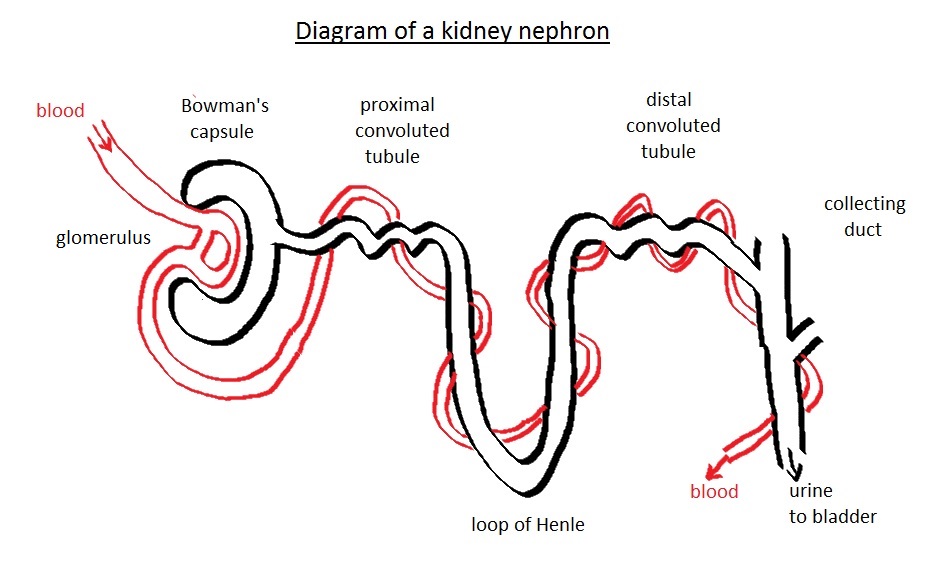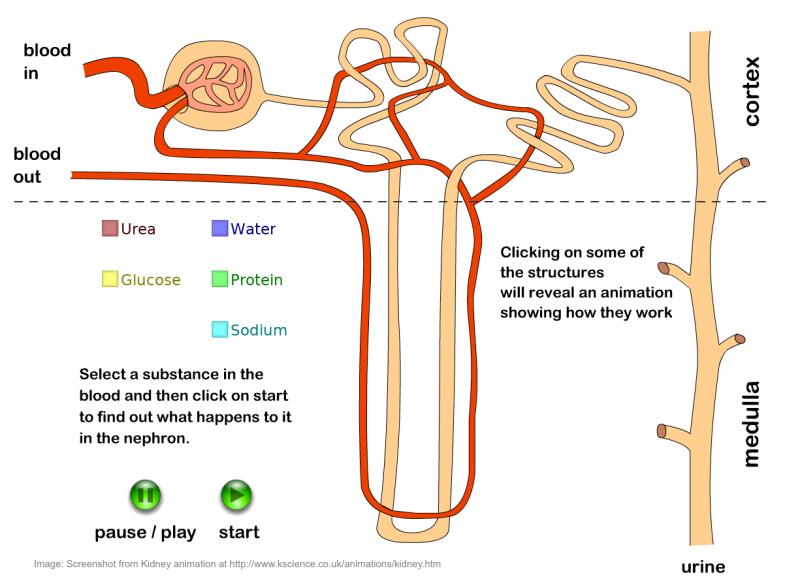Kidney and nephrons.
 Structure and function of the kidney and its nephrons.
Structure and function of the kidney and its nephrons.
In this lesson students begin with a look at the gross structure of the kidney followed by a detailed analysis of the structure and function of the nephron. There is a practical dissection activity and some text based activities supported by videos and structured worksheets students explore the different parts of a nephron and then test their knowledge with some IB style questions.Lesson Description
Guiding Questions
What happens inside the kidney?
How can the kidney filter some molecules, like urea, out of the blood?
Activity 1 - Drawing a diagram of the kidney
Draw a diagram of the kidney using this screen cast as a guide. Remember to keep the lines nice and solid, avoid shading and pay attention to the shape and size of each of the parts.
A student worksheet can be found here.![]() Kidney diagram worksheet and Flashcards of descriptions of the kidney labels may be useful for some students.
Kidney diagram worksheet and Flashcards of descriptions of the kidney labels may be useful for some students.
Activity 2 - Experiment or Demo to dissect a kidney
Carry out the ![]() simple kidney dissection experiment as described below.
simple kidney dissection experiment as described below.


Alternatively, look at the gross structure of the kidney using the models and/or a dissection - key terms: cortex, medulla, renal artery and vein, pelvis and ureter.
There is also a thorough detailed kidney dissection guide on the website of Carolina supplies in the USA.
Activity 3 - Details of Nephron structure and function
This activity is a simple description of the parts of the nephron.
Watch the excellent interactive animation on kidney structure and function from KScience (requires Flash)

Complete the ![]() student's worksheet on kidney nephron structure and function, which includes an activity to summarise the processes of ultrafiltration and selective reabsorption
student's worksheet on kidney nephron structure and function, which includes an activity to summarise the processes of ultrafiltration and selective reabsorption
Teachers notes
Activity 1 is really a simple diagram drawing task. The video shows the process of drawing the diagram, students will have some trouble drawing the pyramids of the medulla. This could be a homework preparation or a 15 minute task.
The dissection of the kidney, Activity 2 is very quick too, allow 15 to 30 minutes, and worthwhile because the diagrams and models never really show the three dimensional nature of the pelvis. This works well with lamb, sheep, and pig kidneys.
Activity 3 is an exploration of the function of a nephron using the online flash animation from KScience
There is a nice downloadable 5 minute schools lecture on kidney function here on Biointeractive
The worksheet helps students to structure their notes, and could be used with a text book instead of the flash animation.
Past paper questions would make an excellent extension to the lesson
There is a summary quiz on kidney and osmoregulation Kidney & osmoregulation HL quiz 11.3 in the Quizzes tests and revision section.

 IB Docs (2) Team
IB Docs (2) Team

